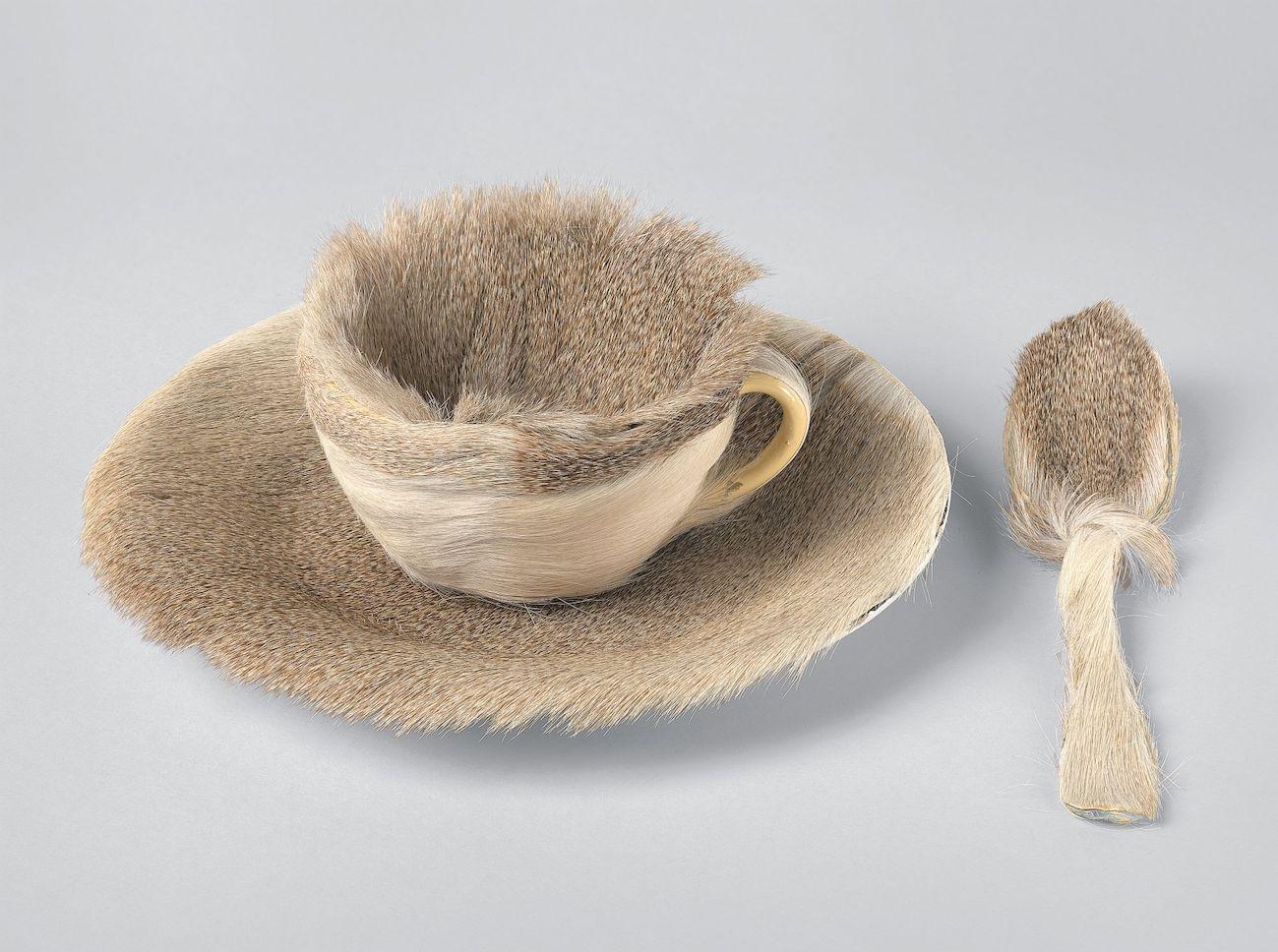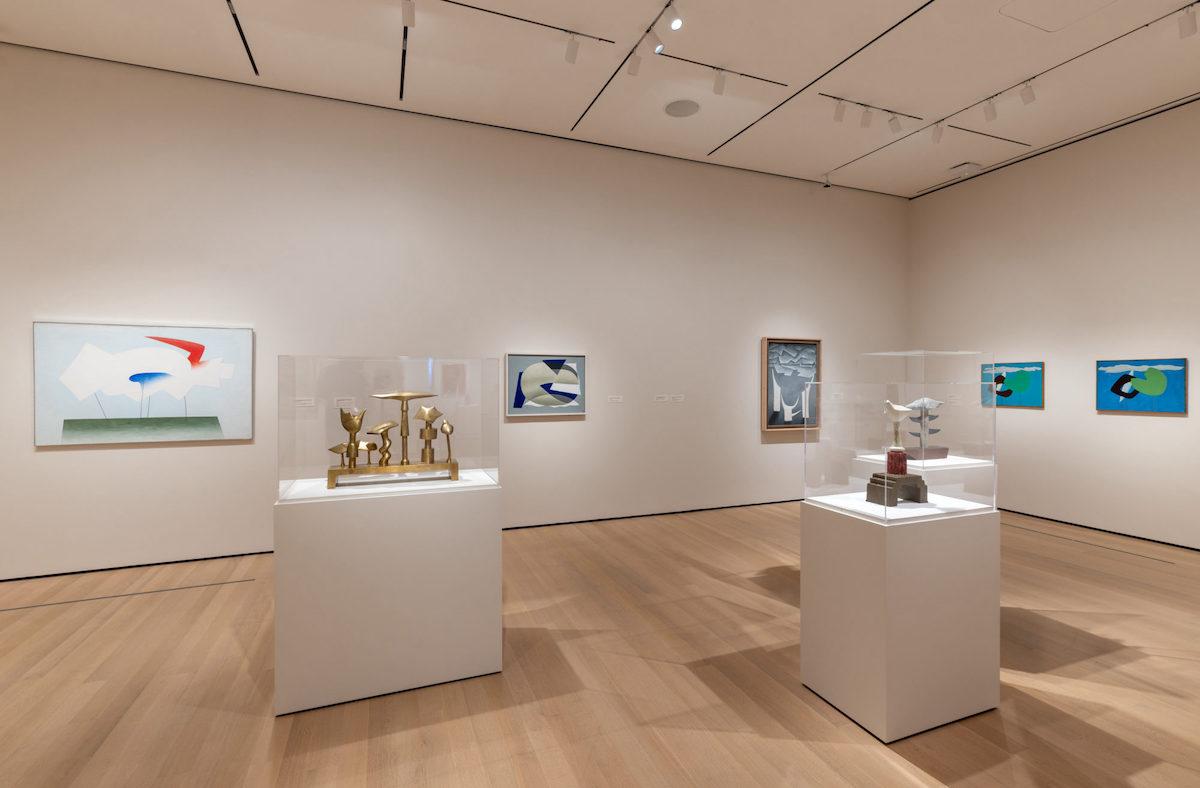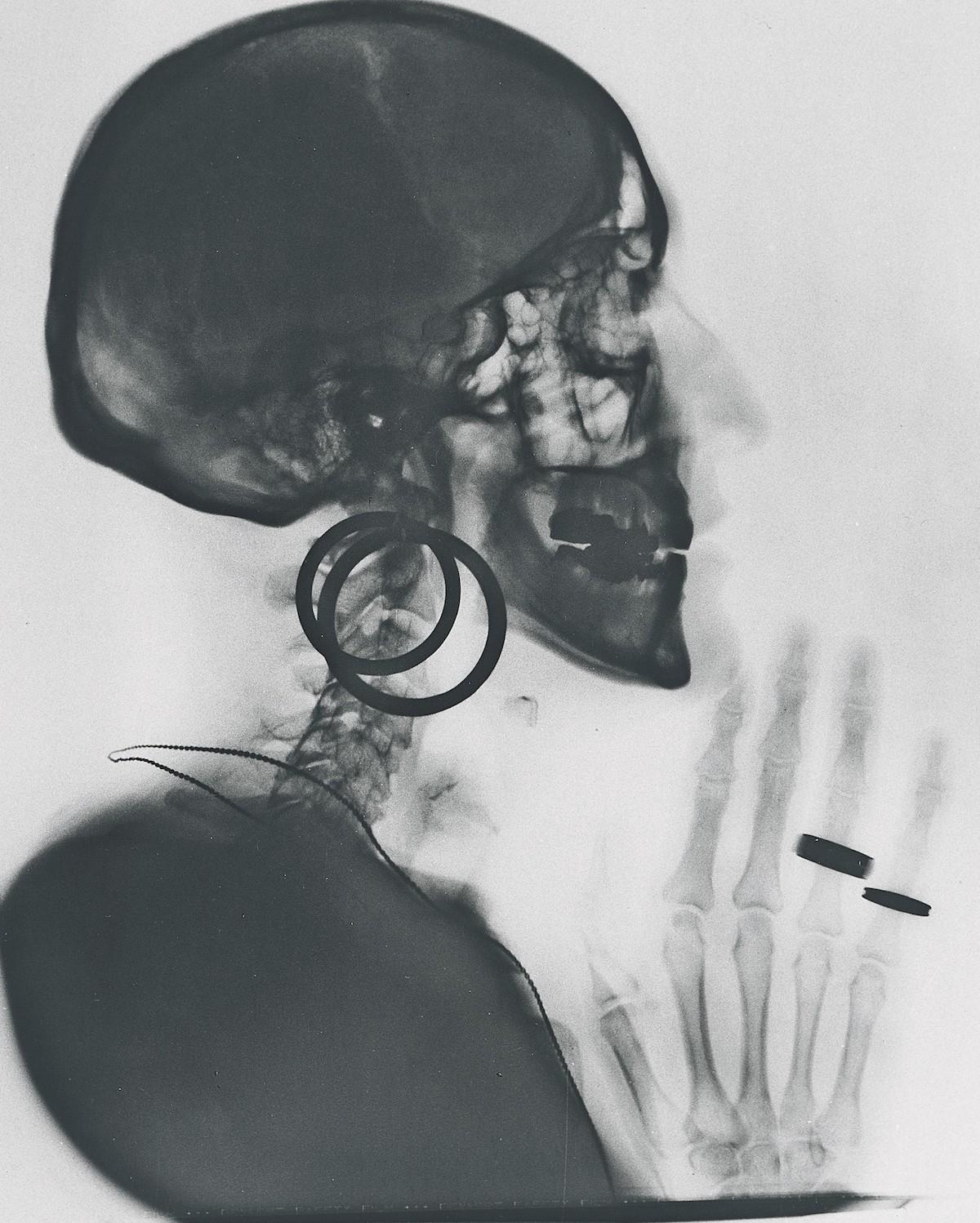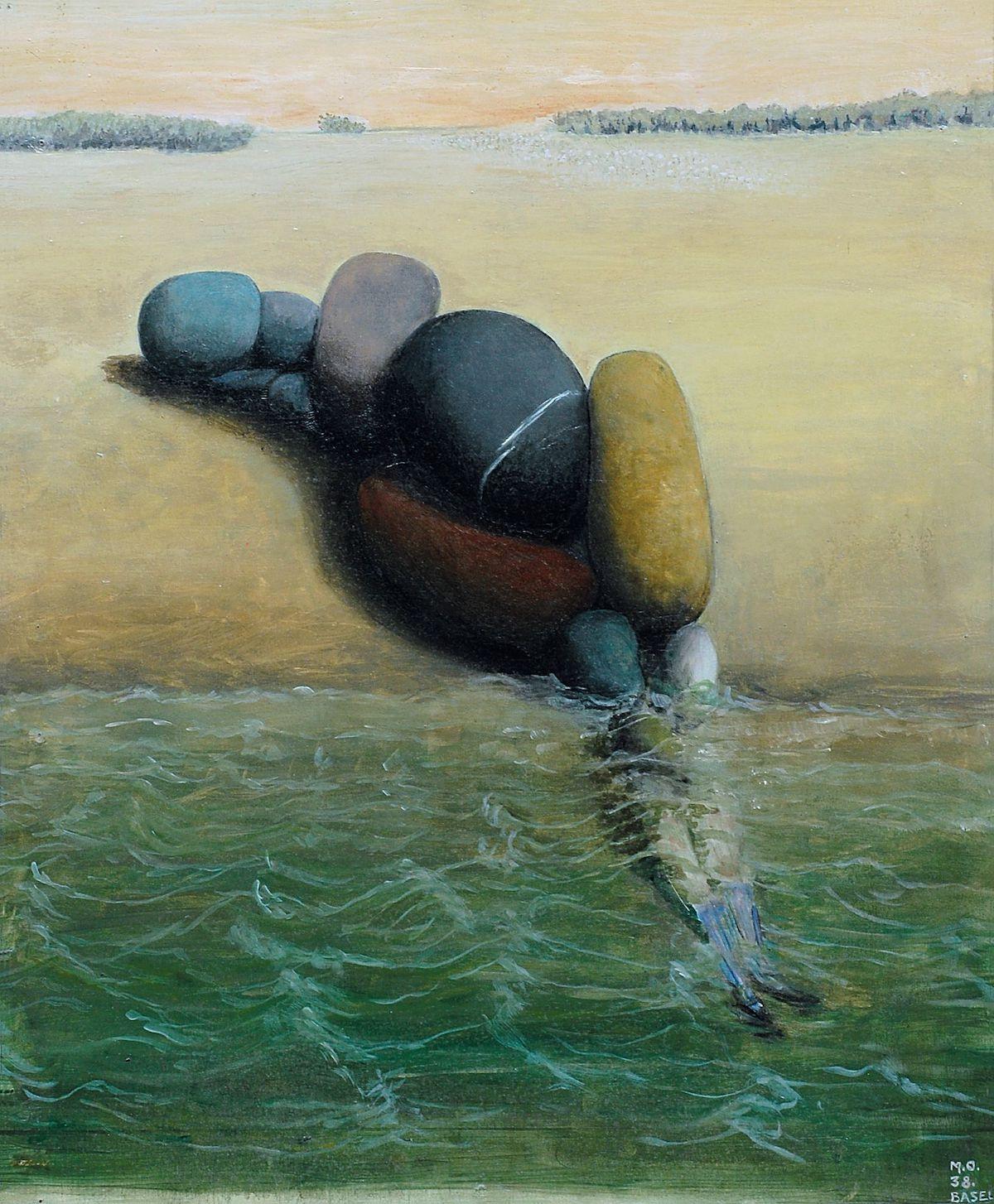Meret Oppenheim was born in Berlin in 1913. She moved with the rest of her family to Basel, Switzerland when her father, a doctor, was conscripted into the army at the outbreak of World War I. While she had some art instruction, she was largely self-taught, though she did pursue formal training once she moved back to Basel in 1937 as the prospect of war loomed over Europe again.
The show begins with Oppenheim’s efforts in bookending the creation of Object. The earliest comprise works of watercolors, gouaches, and ink studies that were done prior to her Parisian sojourn; works that Oppenheim herself described as being Surrealist “before the letter,” since she made them when she knew nothing of the movement. They range from artless dreamscapes to spindly, sometimes mordant, doodles like Suicides Institute (1931), which pictures a literal necktie party of figures hanging themselves along an assembly line of nooses.
Stylistically, Oppenheim never stayed in one place for too long, as evinced not only by these works on paper but also by a nearby assortment of paintings, including several biomorphic abstractions owing a debt to Jean Arp, one of the first artists who embraced Oppenheim in Paris.
The same gallery contains examples of Oppenheim’s ventures into fashion design, which she sold to couturiers like Elsa Schiaparelli. The bangle Picasso admired came out of these endeavors, and thus, Object did, too.
Object itself is a small and fragile thing belying its iconic heft. It goes to the core of Surrealism’s dissociative view of the world by transforming an otherwise unobtrusive item into something disconcerting yet plausible. That is Object’s point, despite the many erotic implications ascribed to it, which Oppenheim herself roundly rejected.
































